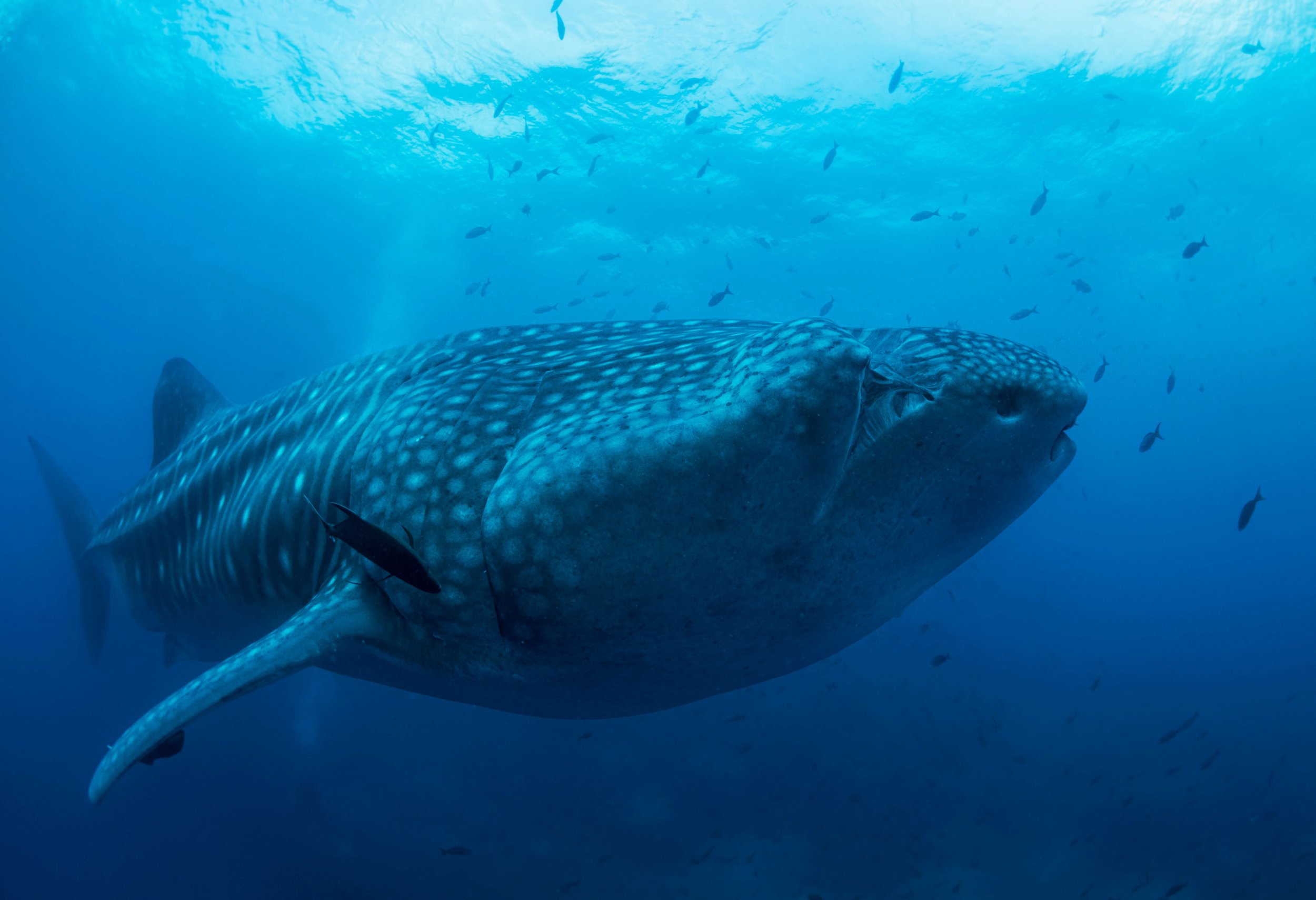Threats & Conservation Status
Whale sharks are highly migratory animals and spend a significant amount of their life in unprotected areas of the ocean.
The various threats faced by ocean wildlife today are growing increasingly concerning.
Whale shark populations have declined by over 50% globally in the last 75 years (one single human lifetime), listing them as an endangered species or largely depleted by the IUCN.
Conservation efforts are essential to mitigate these risks, aiming to protect endangered species while preserving their habitats for future generations.
Most impacting threats to whale shark populations worldwide
Incidental and targeted fisheries catch
Whale shark fishing is globally prohibited, yet the trade of their products persists in some regions, particularly in China, where their meat, gills, and liver oil are in demand. Shark liver oil, known as squalene, is used in many everyday products, including cosmetics, moisturizers, vaccines, and dietary supplements. Incidental capture in fishing gear, such as gillnets and purse seines, remains a significant threat due to their association with tuna schools. Despite regulations requiring the release of accidentally entangled whale sharks, cases of retention and illegal trade still occur, as evidenced by incidents in the Galapagos Marine Reserve and other areas. Recent satellite tagging efforts in the Galapagos have highlighted frequent interactions between whale sharks and fisheries, underscoring the urgent need for long-term monitoring of entanglements, which can be supported by citizen science initiatives.
Vessel strikes
Whale sharks occupy both horizontal and vertical spaces in the ocean that significantly overlap with human maritime activities. Studies indicate that up to 92% of their horizontal range and 50% of their vertical range coincide with areas of high ship traffic, putting them at substantial risk of vessel strikes. Their surface-feeding behavior and slow swimming speeds make them particularly vulnerable to collisions, which often result in severe injuries or fatalities. Unlike many marine species, dead whale sharks typically sink to the ocean floor, making it challenging to assess the full extent of mortality caused by vessel strikes. These factors underscore the need for stricter marine traffic regulations, such as speed limits in key whale shark habitats, to mitigate this pervasive threat.
Marine Pollution
Marine pollution poses a growing threat to whale sharks, primarily through the ingestion of microplastics, which can accumulate in their digestive systems, potentially causing long-term health issues. Additionally, oil spills, chemical pollutants, and discarded fishing gear degrade their habitats and can lead to entanglement or contamination. The global rise in marine debris emphasizes the urgent need for stronger waste management practices and international collaboration to reduce pollution at its source.
Climate Change
Climate change impacts whale sharks by altering their habitats and the distribution of their prey. Rising ocean temperatures and shifting currents can disrupt the plankton blooms that these filter feeders rely on, potentially forcing them to travel greater distances to find food. Furthermore, ocean acidification and coral reef degradation threaten the ecosystems that support their prey, complicating their survival. These changes highlight the importance of addressing climate change to safeguard the delicate balance of marine ecosystems.










